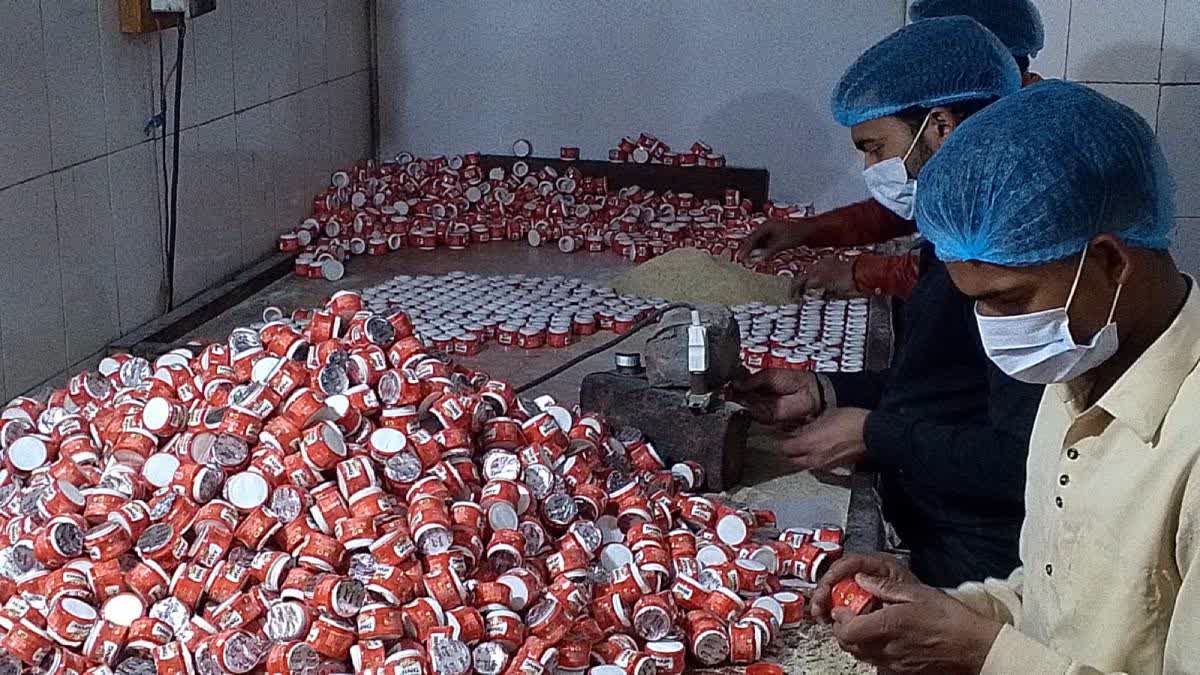Lucknow: The moment you step into Hathras, a district in western Uttar Pradesh, you are welcomed by the sharp, distinctive aroma of asafoetida (Hing). This is due to the district’s thriving production of this essential spice, widely used in Indian and Mediterranean cuisines. Since receiving a Geographical Indication (GI) tag for Hathras Hing in 2023, the industry has witnessed a significant boom, with many local families deeply involved in its trade.
The Hing trade in Hathras dates back nearly a century when Pathans introduced it to India, bringing it in a milk-like form to the local markets.
“When the Pathans stopped coming, our ancestors carried on the trade. The purity of Hing is measured by its pungency--pure Hing is, too, strong for direct consumption and must be diluted before use in cooking,” explained Banke Bihari, a local businessman. Over time, local traders recognised Hing’s medicinal properties, refined it, and transformed it into an indispensable culinary ingredient.
Hing soon became a staple in Indian kitchens, valued for its digestive benefits. To meet increasing market demand, production in Hathras has expanded into a thriving industry. Small-scale production units operating from homes now support larger businesses, ensuring a steady supply.
Many families in Hathras have been engaged in this trade for generations. Today, the Hing industry employs over 12,000 people, with the district hosting approximately 125 small and large manufacturing units.
The One District One Product (ODOP) initiative has further fueled Hing production in Hathras, benefiting numerous families.
“Under this scheme, any loan interest is waived off within a year or two. The GI tag has been a game-changer, as all our packaged products now carry it, assuring consumers of their authenticity from Hathras,” said Vishal Agarwal, a trader.
Local traders acknowledge that the scheme and the GI tag have expanded their reach to remote parts of India and even international markets, significantly boosting exports.
“The GI tag has brought national recognition to our product and has significantly benefited us. Earlier, few people knew about Hathras, but now, thanks to this tag, it is recognised as the Hing capital of India. This has led to a rise in sales,” said Rajesh Agarwal, another trader.
Although geopolitical events like the Afghanistan war and the Russia-Ukraine conflict temporarily disrupted trade, the market has since stabilised. Traders believe Prime Minister Narendra Modi’s initiative to cultivate Hing domestically could be a game-changer.
“The government’s push for Hing cultivation in the Himalayan region is a step in the right direction. However, scaling up will take time since the plant requires four to five years to mature. If successfully grown here, it could significantly reduce import dependence and save annual revenue,” noted Banke Bihari.
India consumes approximately 1,500 tonnes of Hing annually, valued at around Rs 940 crore. The spice is priced between Rs 35,000 and Rs 40,000 per kg on the global market. Each plant yields about half a kilogram of sap, which is then processed into the spice.
Read more: Faridabad’s Surajkund Fair Spotlight: Puneet Dutta’s Revolutionary Edible Tea Cup



